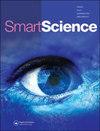深度学习方法与覆盖图像传输:一种多安全自适应图像隐写方案
IF 1.4
Q2 MULTIDISCIPLINARY SCIENCES
引用次数: 0
摘要
在这个信息安全和通信的时代,在考虑信息隐藏时,一个重要的优先事项是实现一个健壮和安全的隐写系统。这种信息隐藏方案的发展要求该方案能够在掩护媒体中隐藏秘密消息。现有隐写协议中最令人烦恼的问题是隐蔽性、安全性和容量,研究人员经常强调这些问题之间的权衡。学者们一直忽略了安全性和有效负载之间的平衡,因为解决一个问题已经被证明会对另一个问题产生影响,反之亦然。为了克服这些问题,本研究提出了一种有效的图像隐写方法,即基于传统神经网络的边缘检测方法(CNN-EDM)。利用CNN-EDM改进了方案的贡献。本研究采用了四个主要阶段来实现目标,从封面图像和秘密图像的准备开始,然后是嵌入,最后是提取。最后一个阶段是评估阶段,该阶段使用几个评估来对获得的结果进行基准测试。本研究使用了信号与图像处理研究所(SIPI)的标准数据库,其中包含512 × 512像素的彩色和灰度图像。使用不同的参数来测试基于安全性和不可感知性(图像质量)的建议方案的性能。使用直方图分析、峰值信噪比(PSNR)和结构相似指数(SSIM)三个重要指标来评估图像质量。此外,使用两个指标来评估所提出系统的安全特性:人类视觉系统(HVS)和卡方(X2)攻击。评估结果表明,该方案能够提高容量、不可见性和安全性,解决了该领域存在的问题。图形抽象本文章由计算机程序翻译,如有差异,请以英文原文为准。
Deep learning approach and cover image transportation: a multi-security adaptive image steganography scheme
ABSTRACT In this era of information security and communication, a major priority is the achievement of a robust and secure steganography system when thinking about information concealment. The development of such an information-hiding scheme demands that the scheme be able to hide a secret message within the cover media. The most vexing issues in existing steganography protocols are imperceptibility, security, and capacity, and researchers have frequently emphasized a trade-off between these issues. Scholars have consistently ignored the balance between security and payload because resolving one problem has been shown to have an impact on the other, and vice versa. To overcome these problems, an effective method known as the Conventional Neural Network based Edge Detection Method (CNN-EDM) has been presented for image steganography in this study. The CNN-EDM is used to improve the contributions of the proposed scheme. Four main stages were used to achieve the objectives in this research, beginning with the cover image and secret image preparation, followed by embedding, and culminating in extraction. The last stage is the evaluation stage, which employs several evaluations to benchmark the obtained results. A standard database from the Signal and Image Processing Institute (SIPI) containing color and grayscale images with 512 × 512 pixels was utilized in this study. Different parameters were used to test the performance of the suggested scheme based on security and imperceptibility (image quality). The image quality was evaluated using three important metrics: histogram analysis, peak signal-to-noise ratio (PSNR), and structural similarity index (SSIM). Furthermore, two metrics were used to evaluate the security properties of the proposed system: the Human Visual System (HVS) and Chi-square (X2) attacks. The evaluations showed that the proposed scheme can enhance the capacity, invisibility, and security features and address the already existing problems in this domain. Graphical abstract
求助全文
通过发布文献求助,成功后即可免费获取论文全文。
去求助
来源期刊

Smart Science
Engineering-Engineering (all)
CiteScore
4.70
自引率
4.30%
发文量
21
期刊介绍:
Smart Science (ISSN 2308-0477) is an international, peer-reviewed journal that publishes significant original scientific researches, and reviews and analyses of current research and science policy. We welcome submissions of high quality papers from all fields of science and from any source. Articles of an interdisciplinary nature are particularly welcomed. Smart Science aims to be among the top multidisciplinary journals covering a broad spectrum of smart topics in the fields of materials science, chemistry, physics, engineering, medicine, and biology. Smart Science is currently focusing on the topics of Smart Manufacturing (CPS, IoT and AI) for Industry 4.0, Smart Energy and Smart Chemistry and Materials. Other specific research areas covered by the journal include, but are not limited to: 1. Smart Science in the Future 2. Smart Manufacturing: -Cyber-Physical System (CPS) -Internet of Things (IoT) and Internet of Brain (IoB) -Artificial Intelligence -Smart Computing -Smart Design/Machine -Smart Sensing -Smart Information and Networks 3. Smart Energy and Thermal/Fluidic Science 4. Smart Chemistry and Materials
 求助内容:
求助内容: 应助结果提醒方式:
应助结果提醒方式:


